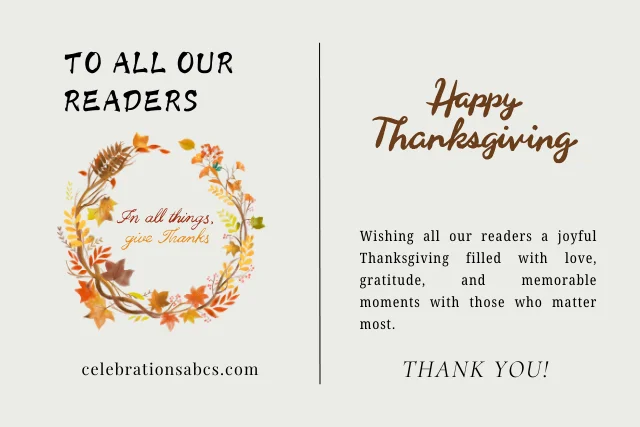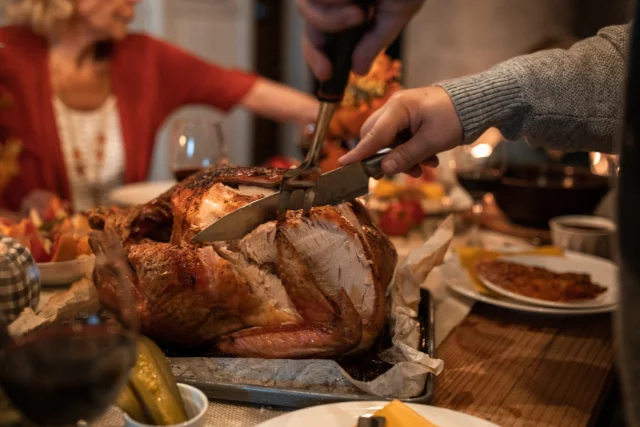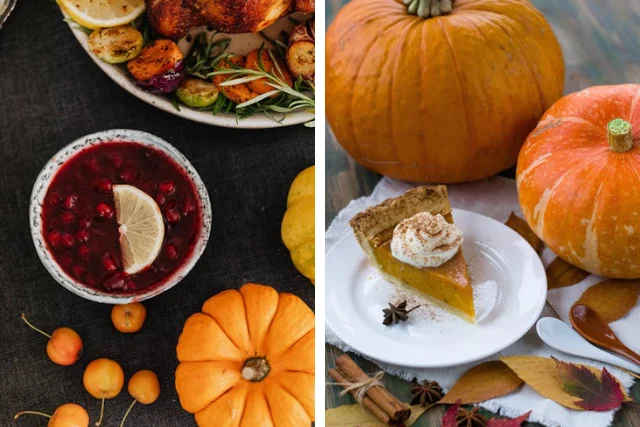As an Amazon Associate, I earn from qualifying purchases. This post may contain affiliate links. If you make a purchase through these links, we may earn a commission at no additional cost to you. Please read our full disclosure here.
Thanksgiving is one of the most beloved holidays in both Canada and the United States. It’s a time for family, gratitude, and of course, delicious food. However, while the two countries share the same holiday name, their celebrations differ in several ways, from historical origins to the date and cultural significance. Whether you’re planning a Thanksgiving dinner in Canada or the U.S., understanding these differences can help you appreciate the unique traditions of each. In this article, we’ll explore what sets Canadian and U.S. Thanksgiving apart.
History of Thanksgiving
While both Canadian and U.S. Thanksgiving share a common theme of gratitude, their origins are rooted in different historical events.
Canadian Thanksgiving
The first recorded Thanksgiving celebration in Canada dates back to 1578, when English explorer Martin Frobisher held a feast to give thanks for his safe journey to the New World. This early Thanksgiving was more about survival and gratitude for safe passage rather than the harvest. Over time, it evolved into a celebration of the fall harvest, officially becoming a national holiday in 1879. Today, it’s seen as a time to give thanks for the bounty of the land and the company of loved ones.
U.S. Thanksgiving
In contrast, the U.S. version of Thanksgiving has its roots in the Pilgrims’ 1621 feast with the Wampanoag people. After a successful harvest, the Pilgrims, who had settled in Plymouth, Massachusetts, celebrated with a three-day feast to give thanks for the help they received from the Native Americans. This event is often regarded as the “First Thanksgiving” in the U.S., though it was not declared a national holiday until 1863, when President Abraham Lincoln proclaimed it a day of thanks and unity during the Civil War.
Dates
One of the most noticeable differences between Canadian and U.S. Thanksgiving is the date on which each is celebrated, with the timing of the harvest playing a key role.
Canadian Thanksgiving
Canadians celebrate Thanksgiving on the second Monday of October. This earlier date aligns with the shorter growing season in Canada, where the harvest typically occurs earlier than in the U.S. The holiday is a chance for Canadians to give thanks for the autumn harvest and spend time with family before the colder weather sets in.
U.S. Thanksgiving
In the United States, Thanksgiving is observed on the fourth Thursday of November. This later date is tied to the end of the fall harvest in many parts of the U.S. and was made official in 1941 when President Franklin D. Roosevelt signed a bill establishing the current date. For Americans, Thanksgiving also marks the beginning of the holiday season, with Black Friday following the day after.
Traditional Foods
Food plays a central role in both Canadian and U.S. Thanksgiving, with several dishes being staples at the holiday table. However, each country has its own culinary variations that reflect regional tastes and traditions.
Canadian Thanksgiving
Much like in the U.S., turkey is often the star of the meal, accompanied by stuffing, mashed potatoes, and gravy. However, Canadian Thanksgiving menus may also include local and regional specialties. Dishes like butter tarts, Nanaimo bars, and wild game (such as venison) can often be found on Canadian tables, especially in rural areas. In some regions, salmon or other seafood may also be served, reflecting Canada’s rich coastal influence.
U.S. Thanksgiving
While the main meal in the U.S. also features turkey, there are a few distinct dishes that make American Thanksgiving unique. Side dishes like cornbread, cranberry sauce, and green bean casserole are common in the U.S., as is the beloved pumpkin pie. In the Southern U.S., you’ll often find dishes like sweet potato casserole or pecan pie, adding a regional twist to the traditional Thanksgiving meal.
Celebrations
While both Canada and the U.S. see Thanksgiving as a time for family and gratitude, the way each country celebrates the holiday reflects different cultural traditions and events.
Canadian Thanksgiving
In Canada, Thanksgiving tends to be a quieter, more intimate affair. Families gather for a holiday meal over the long weekend, often taking advantage of the beautiful fall weather to enjoy outdoor activities like hiking or visiting local festivals. Although there are some parades and community events, Canadian Thanksgiving doesn’t have the same level of spectacle as its American counterpart. The holiday is more focused on spending time with loved ones and reflecting on the blessings of the harvest.
U.S. Thanksgiving
In contrast, U.S. Thanksgiving is celebrated with greater fanfare. One of the most iconic events is the Macy’s Thanksgiving Day Parade, a massive televised event featuring floats, balloons, and performances, drawing millions of viewers. Football is also a big part of American Thanksgiving, with many families gathering to watch NFL games. Additionally, U.S. Thanksgiving has become closely linked with the kickoff of the holiday shopping season, with Black Friday taking place the day after, drawing shoppers looking for deals on gifts.
Cultural Significance
Though Thanksgiving in both Canada and the U.S. revolves around giving thanks and spending time with family, the deeper cultural meaning behind the holiday differs slightly between the two countries.
Canadian Thanksgiving
In Canada, Thanksgiving is largely a celebration of the harvest and the changing of the seasons. It has less of a historical narrative compared to its American counterpart and is more focused on the natural bounty of the land. The holiday serves as a time for reflection on the blessings of life, with a particular emphasis on the importance of community and nature. Its roots are closely tied to European harvest festivals, making it more about gratitude for agricultural abundance.
U.S. Thanksgiving
In the U.S., Thanksgiving carries significant historical weight. The holiday is often linked to the Pilgrims’ 1621 feast with the Wampanoag, symbolizing cooperation between Native Americans and European settlers. However, the holiday has evolved into a broader celebration of gratitude, unity, and American identity. It has become a major national event that promotes family togetherness and serves as a unifying holiday across different regions and cultural backgrounds. Despite its origins, U.S. Thanksgiving is more about modern-day traditions than the historical narrative.
Thanksgiving in Canada and the U.S. may share a common theme of gratitude, but the differences in history, date, traditional foods, and celebrations make each holiday unique. From the quieter, harvest-focused observances in Canada to the lively parades and football traditions in the U.S., both celebrations reflect the values and cultures of their respective countries. Whether you’re enjoying a traditional turkey dinner with family or reflecting on the blessings of the season, Thanksgiving is a time to come together and appreciate what we have. No matter how you choose to celebrate, embracing the spirit of gratitude is what truly makes the holiday special.



